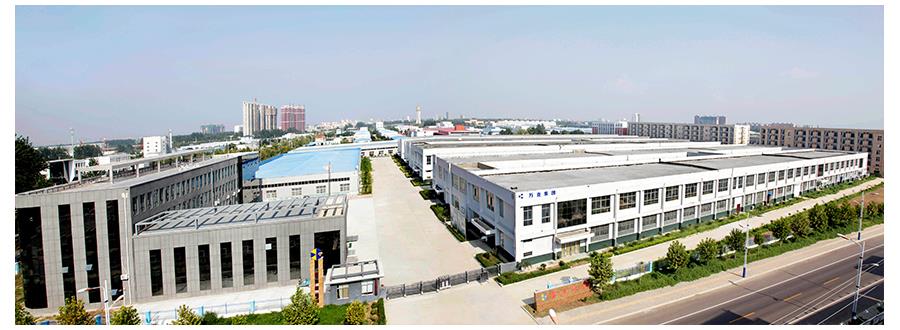How to Choose the Particle Size of the Grinding Wheel?
-2021-09-26 17:22:02 -
The choice of abrasive particle size mainly considers the requirements of grinding efficiency and workpiece surface roughness. Generally, it can be selected according to the following points.
① When the workpiece processing accuracy is high, and the surface roughness value is low, the abrasive tool with fine abrasive grain size should be selected. The smaller the abrasive, the more abrasives involved in cutting at the same time, the smaller the residual abrasive cutting marks on the surface of the workpiece, and the lower the surface roughness value. However, the choice of abrasive particle size must also be considered in conjunction with the grinding conditions used. If the selected amount of grinding is small and the grinding wheel is finely dressed, the coarser abrasive grain size can also be used to obtain a lower surface roughness value of the workpiece.
② When the contact area between the abrasive tool and the workpiece surface is relatively large, or the grinding depth is also large, the abrasive with coarse grain size should be used. Coarse abrasives have less friction with the surface of the workpiece and generate less heat. Therefore, when the end face of the grinding wheel is used for flat grinding, the selected abrasive grain size can be coarser than when using the periphery of the grinding wheel for flat grinding.
Usually. Flat grinding adopts 36#~46# grit grinding wheels, and the surface roughness value of the workpiece can reach 0.8~0.4μm. If the grinding wheel speed is increased vs, the grinding depth ap is reduced, the surface roughness value Ra of the workpiece can reach 0.4μm~0.2μm. During fine grinding, 150#~240# grit abrasives are used for grinding, and the workpiece surface roughness value Ra can reach Or lower. When performing mirror grinding, select the graphite grinding wheel of resin bond with the fine powder of W10~W7 particle size.
③ In rough grinding, the machining allowance and the adopted grinding depth are relatively large, and the particle size of the abrasive should be coarser than that in fine grinding, so as to improve production efficiency.
④ For the cutting and grooving process, coarse-grained, loose-structured and high-hardness abrasives should be used.
⑤ When grinding ductile metals and soft metals, such as brass, red copper, soft bronze, etc., the surface of the abrasive tool is easy to be blocked by chips, so coarse-grained abrasives should be used.
⑥ For grinding materials with high hardness, such as hardened steel, alloy steel, etc., coarse-grained abrasives should be used. When grinding cemented carbide, due to the poor thermal conductivity of the material, it is easy to cause burns and cracks. Therefore, it is better to choose a coarser-grained abrasive. For the grinding of thin and thin-walled workpieces, coarse-grained abrasives should be used because of their easy heating and deformation.
⑦ For workpieces with small cutting allowances or small contact surfaces between the abrasive tools and the workpiece, finer-grained abrasives can be used. Compared with the abrasives used for dry grinding, the abrasive grain size of wet grinding can be finer.
⑧ When processing on a rigid grinder, coarser abrasives can be used.
⑨ When forming grinding, it is hoped that the shape retention of the working surface of the grinding wheel is better, so it is better to choose a finer grain size for the abrasive.
⑩ In high-speed grinding, in order to improve the grinding efficiency, the particle size of the abrasive is 1~2 smaller than that of ordinary grinding. Because the fine-grained abrasive grains are sharper, it is easy to cut into the workpiece. At the same time, there are more working abrasive particles per unit working area of the grinding wheel, and the lining of each abrasive particle is smaller, so it is not easy to blunt. In addition, even if individual abrasive particles fall off, the impact on the unevenness of the grinding wheel wear is not as large as that of the coarse particle size, so it is beneficial to maintain the smoothness of the grinding process. However, the particle size of the grinding wheel during high-speed grinding should not be too fine, otherwise, the chip removal conditions will deteriorate, which is not conducive to improving the grinding efficiency.
Generally speaking, medium-grain abrasives are most commonly used. Fine-grained abrasives are usually only used for fine grinding, grinding, and polishing. In batch production, under the premise of meeting the requirements of workpiece roughness, abrasives with coarser grain size should be selected as far as possible to improve production efficiency. In small-batch or single-piece production, the processing quality of the workpiece is generally considered, so it is more advantageous to choose some fine-grained abrasives.
For Diamond or CBN grinding wheels, 150# is a medium-coarse grain size (equivalent to corundum 46#), which can meet most of the needs, without special finish RA; if you want faster grinding, you can choose rougher grit (such as 100# 120#, etc.), but its surface treatment result will be rougher, how to achieve faster grinding and better surface? Recommend choosing two or three grit sizes as a group, first using coarse abrasive particles for roughening, and then fine grinding.



① When the workpiece processing accuracy is high, and the surface roughness value is low, the abrasive tool with fine abrasive grain size should be selected. The smaller the abrasive, the more abrasives involved in cutting at the same time, the smaller the residual abrasive cutting marks on the surface of the workpiece, and the lower the surface roughness value. However, the choice of abrasive particle size must also be considered in conjunction with the grinding conditions used. If the selected amount of grinding is small and the grinding wheel is finely dressed, the coarser abrasive grain size can also be used to obtain a lower surface roughness value of the workpiece.
② When the contact area between the abrasive tool and the workpiece surface is relatively large, or the grinding depth is also large, the abrasive with coarse grain size should be used. Coarse abrasives have less friction with the surface of the workpiece and generate less heat. Therefore, when the end face of the grinding wheel is used for flat grinding, the selected abrasive grain size can be coarser than when using the periphery of the grinding wheel for flat grinding.
Usually. Flat grinding adopts 36#~46# grit grinding wheels, and the surface roughness value of the workpiece can reach 0.8~0.4μm. If the grinding wheel speed is increased vs, the grinding depth ap is reduced, the surface roughness value Ra of the workpiece can reach 0.4μm~0.2μm. During fine grinding, 150#~240# grit abrasives are used for grinding, and the workpiece surface roughness value Ra can reach Or lower. When performing mirror grinding, select the graphite grinding wheel of resin bond with the fine powder of W10~W7 particle size.
③ In rough grinding, the machining allowance and the adopted grinding depth are relatively large, and the particle size of the abrasive should be coarser than that in fine grinding, so as to improve production efficiency.
④ For the cutting and grooving process, coarse-grained, loose-structured and high-hardness abrasives should be used.
⑤ When grinding ductile metals and soft metals, such as brass, red copper, soft bronze, etc., the surface of the abrasive tool is easy to be blocked by chips, so coarse-grained abrasives should be used.
⑥ For grinding materials with high hardness, such as hardened steel, alloy steel, etc., coarse-grained abrasives should be used. When grinding cemented carbide, due to the poor thermal conductivity of the material, it is easy to cause burns and cracks. Therefore, it is better to choose a coarser-grained abrasive. For the grinding of thin and thin-walled workpieces, coarse-grained abrasives should be used because of their easy heating and deformation.
⑦ For workpieces with small cutting allowances or small contact surfaces between the abrasive tools and the workpiece, finer-grained abrasives can be used. Compared with the abrasives used for dry grinding, the abrasive grain size of wet grinding can be finer.
⑧ When processing on a rigid grinder, coarser abrasives can be used.
⑨ When forming grinding, it is hoped that the shape retention of the working surface of the grinding wheel is better, so it is better to choose a finer grain size for the abrasive.
⑩ In high-speed grinding, in order to improve the grinding efficiency, the particle size of the abrasive is 1~2 smaller than that of ordinary grinding. Because the fine-grained abrasive grains are sharper, it is easy to cut into the workpiece. At the same time, there are more working abrasive particles per unit working area of the grinding wheel, and the lining of each abrasive particle is smaller, so it is not easy to blunt. In addition, even if individual abrasive particles fall off, the impact on the unevenness of the grinding wheel wear is not as large as that of the coarse particle size, so it is beneficial to maintain the smoothness of the grinding process. However, the particle size of the grinding wheel during high-speed grinding should not be too fine, otherwise, the chip removal conditions will deteriorate, which is not conducive to improving the grinding efficiency.
Generally speaking, medium-grain abrasives are most commonly used. Fine-grained abrasives are usually only used for fine grinding, grinding, and polishing. In batch production, under the premise of meeting the requirements of workpiece roughness, abrasives with coarser grain size should be selected as far as possible to improve production efficiency. In small-batch or single-piece production, the processing quality of the workpiece is generally considered, so it is more advantageous to choose some fine-grained abrasives.
For Diamond or CBN grinding wheels, 150# is a medium-coarse grain size (equivalent to corundum 46#), which can meet most of the needs, without special finish RA; if you want faster grinding, you can choose rougher grit (such as 100# 120#, etc.), but its surface treatment result will be rougher, how to achieve faster grinding and better surface? Recommend choosing two or three grit sizes as a group, first using coarse abrasive particles for roughening, and then fine grinding.



Related News
- Characteristics and Application of Resin Diamond Grinding Disc
- Glass Diamond Drill Bits Revolutionize Precision Drilling in the Glass Industry
- Innovative Diamond Resin Discs Revolutionize Hair Clipper Grinding Efficiency
- Diamond Micropowder Unleashes New Possibilities
- Diamond Powder Revolutionizes Drawing Die Polishing: Unveiling the Ultimate Finishing Solution
- Revolutionizing Gem Polishing with Diamond Micropowder
- Metal Diamond Wheels from HNHONGXIANG
- Diamond Micropowder on the Surface Grinder
- Diamond Micropowder Used in Polishing Liquid
- Glass Diamond Bits
- Classification of Grinder
- Surface Grinding and Surface Grinder









